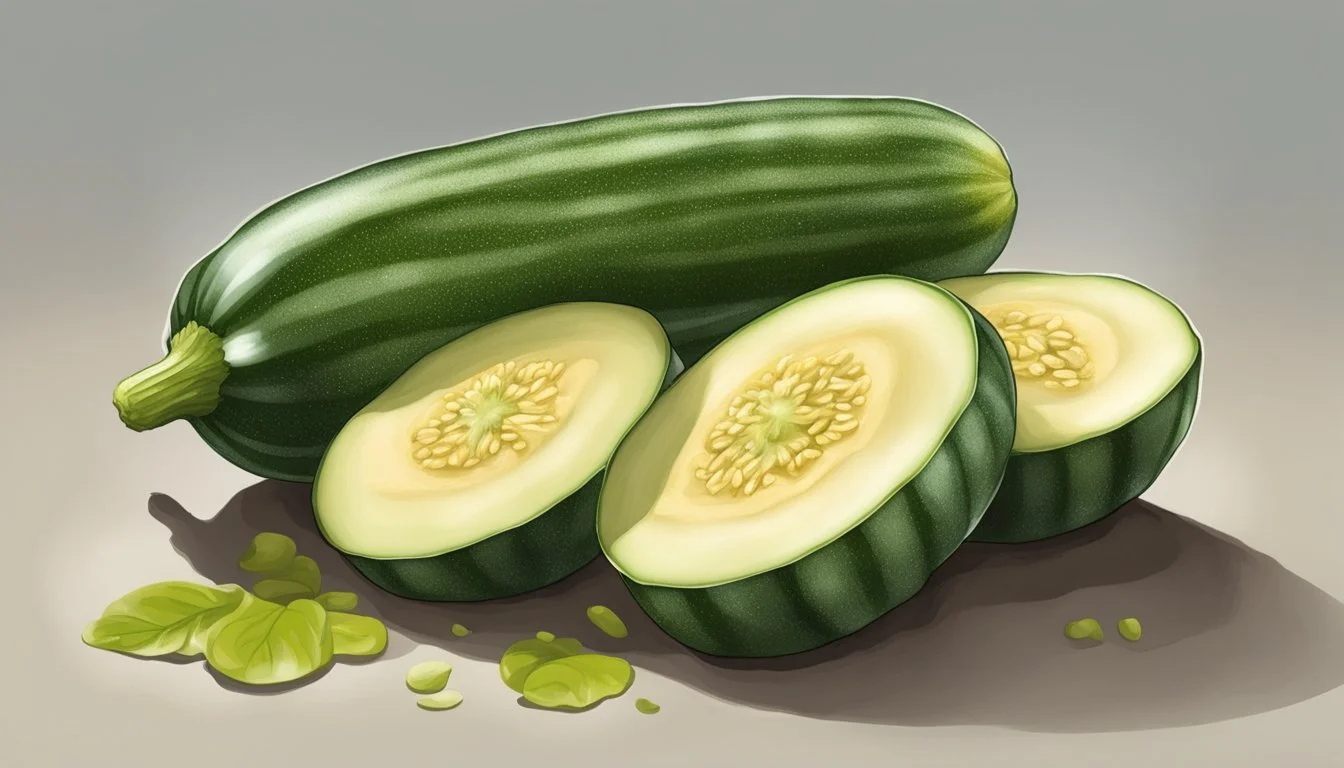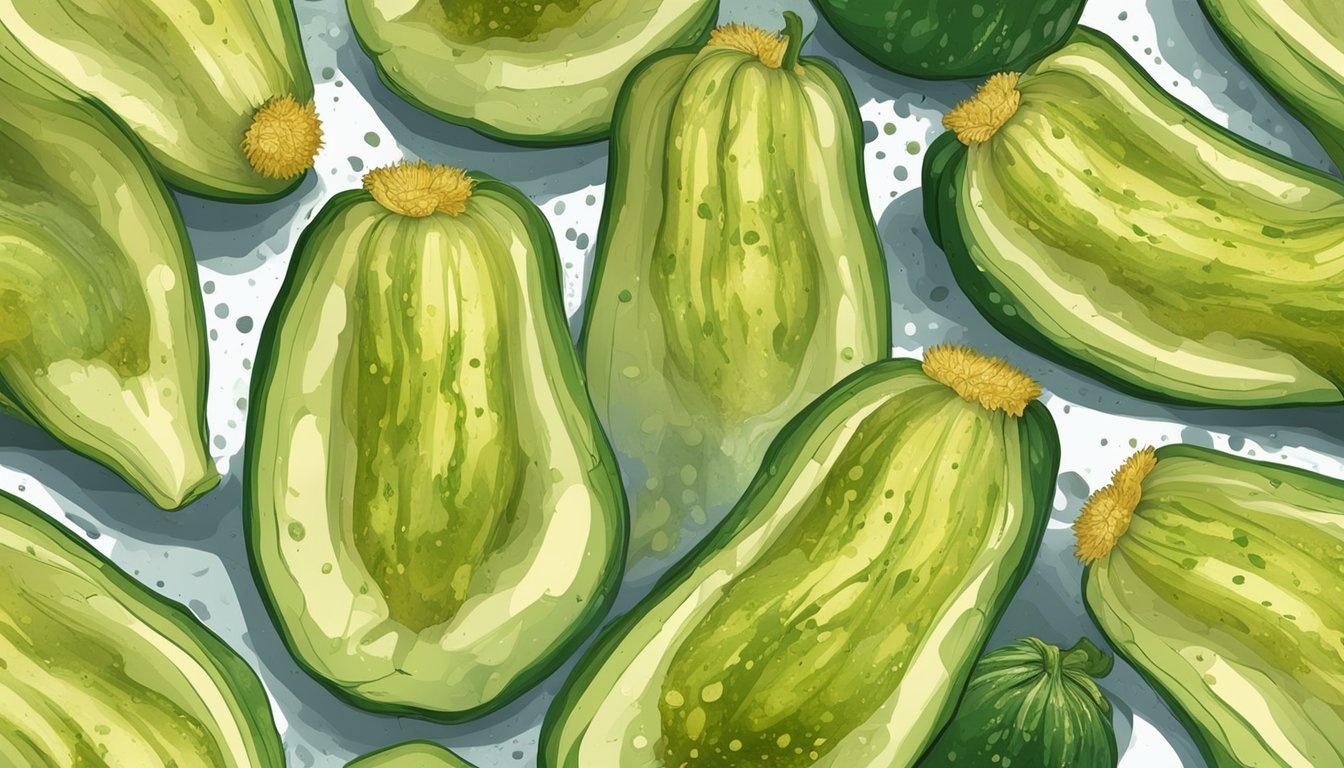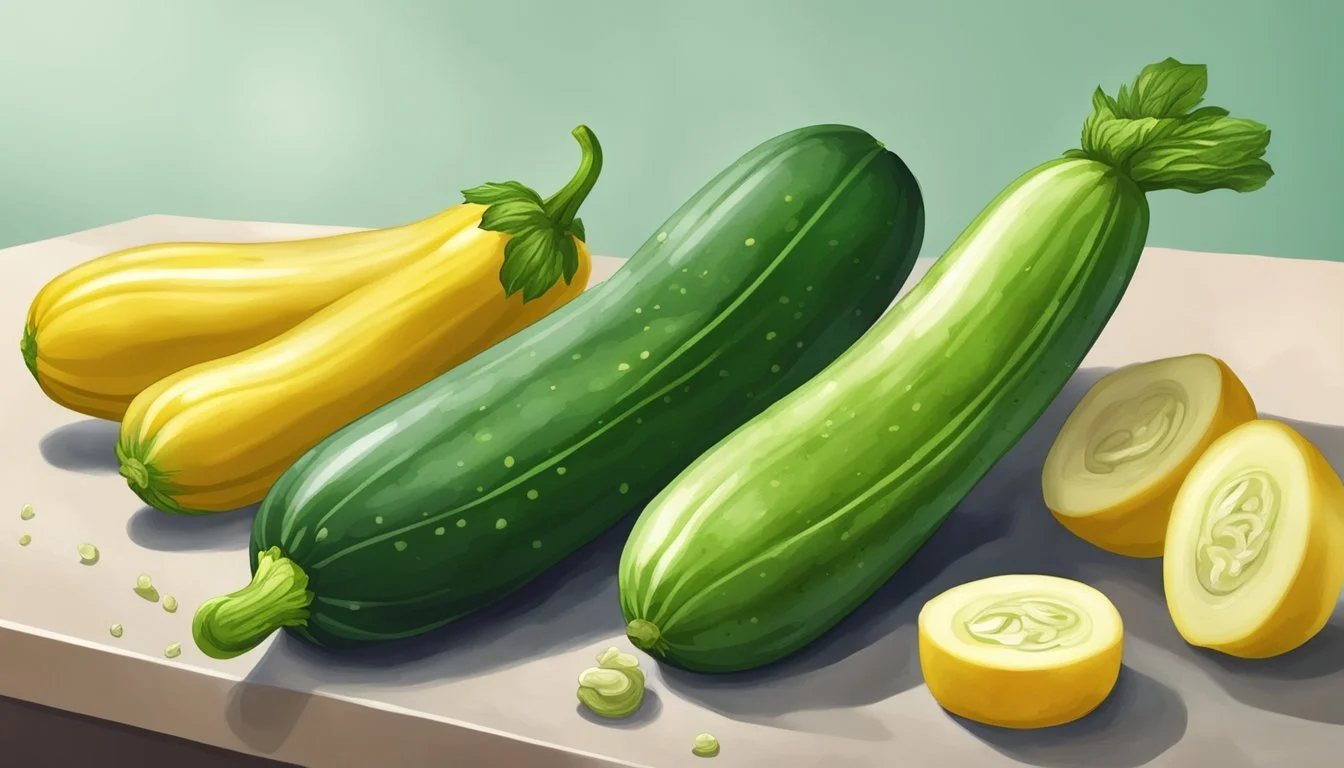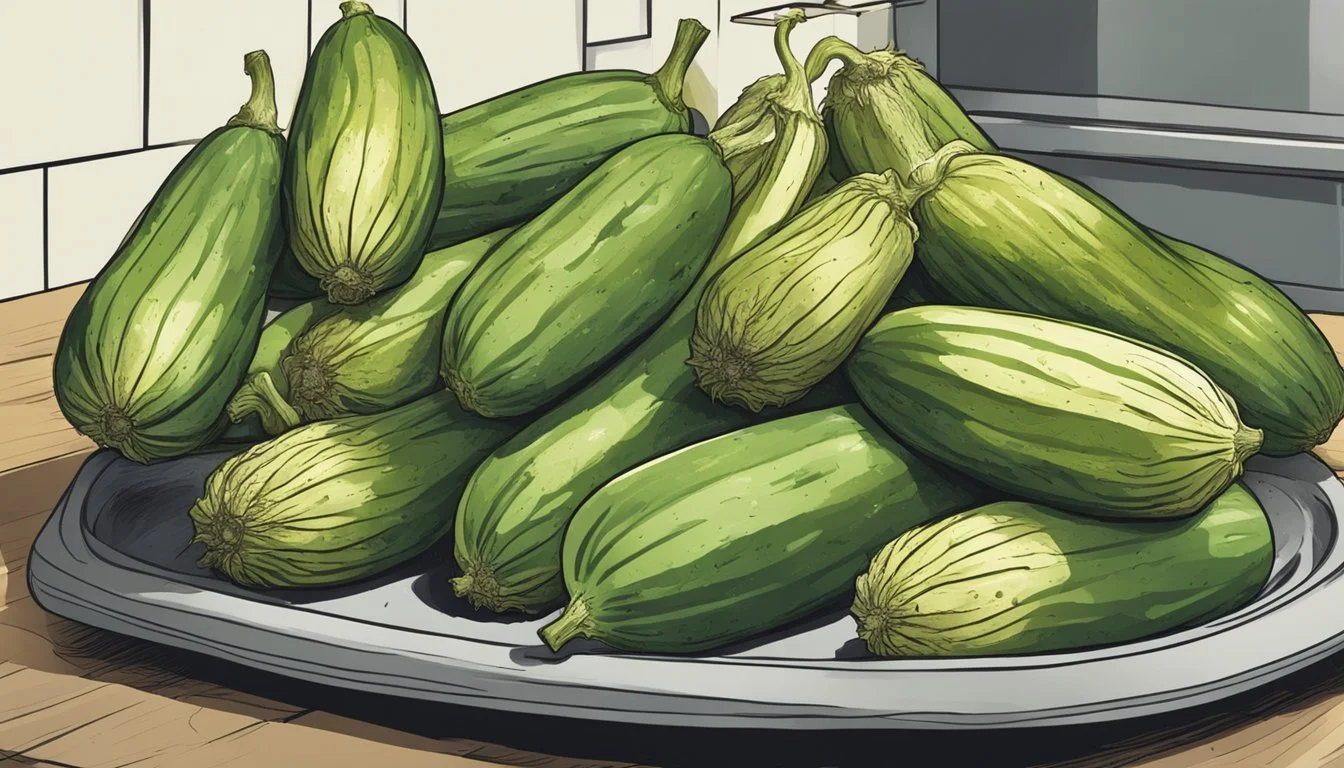Does Zucchini Go Bad?
Signs and Storage Tips
Zucchini, like all fresh produce, has a finite shelf life and proper storage is essential to extend its freshness. These summer squash vegetables are staples in grocery stores and home gardens alike, renowned for their versatility in recipes. However, determining when zucchini has gone bad is crucial to ensure the safety and quality of the dishes they're used in. A spoiled zucchini can negatively impact the flavor of a meal and may even cause foodborne illness if consumed.
To assess the freshness of zucchini, one should pay attention to its physical characteristics. Fresh zucchini should be firm to the touch and have a vibrant green color. Over time, it may begin to show signs of deterioration such as a softening texture, dark spots, or the presence of mold. These are indicators that the zucchini is no longer at its peak quality. A foul smell is another clear signal that zucchini has spoilt and should be discarded.
Proper storage can greatly prolong the viability of zucchini, keeping it fresh for one to two weeks when whole, and a few days if cut or cooked. Refrigeration can help maintain its quality, while wrapping it in a plastic bag can prevent excess moisture, which accelerates spoilage. Recognizing the signs of spoilage and understanding how to store zucchini can minimize waste and ensure that only the best quality produce is consumed.
Zucchini Basics
Zucchini is a highly versatile vegetable that is best used when it's fresh and can be stored effectively to maintain its quality. Understanding how to identify its freshness and the optimal conditions for storage is essential for any zucchini lover or home cook.
Identifying Fresh Zucchini
Fresh zucchini should have a bright green color, indicating its vibrancy and prime edibility. The skin needs to be firm to the touch without any significant blemishes or bruising. Fresh zucchini will not exhibit dark or soft spots, and the absence of wrinkles or mushiness ensures its freshness. It’s important to select zucchinis that have a uniformly vibrant green, as this signifies they've been harvested at the right time and handled properly. Large seeds within the zucchini can also suggest overripeness.
Optimal Storage Conditions
To maintain the quality and firmness of zucchini, proper storage conditions are crucial. Zucchini should be stored in the refrigerator, particularly in the vegetable drawer where the temperature is more consistent and cool. Ideally, store zucchini uncut and unwashed to prevent moisture accumulation, which can accelerate spoilage.
The optimal temperature range in the refrigerator for zucchini is between 40°F and 50°F (4°C and 10°C). If stored properly, zucchini can last up to two weeks in the fridge. However, if it has been sliced or cooked, it should be used within 3 to 4 days to ensure it remains safe for consumption. For prolonged storage, zucchini can be frozen, but this may affect its texture upon thawing.
Signs of Zucchini Spoilage
Identifying bad zucchini ensures that only fresh, healthy vegetables are consumed. Key indicators of spoilage include visual changes, alterations in texture and firmness, and unpleasant odors or tastes.
Visual Indicators
Inspecting zucchini for visual changes is the first step in recognizing spoilage. Spoiled zucchini may exhibit discoloration, which can range from dull color to full-blown browning or yellowing. Black spots or mold are also telltale signs. Zucchini normally has a vibrant green skin, but if spots are visible, it is best to cut away the damaged area if they are few and there's no mold. However, multiple or moldy spots indicate the zucchini should be discarded.
Texture and Firmness
Fresh zucchini is known for its firmness. When it starts to go bad, the texture can become mushy or slimy. If pressing on the skin results in soft spots, it's a sign the vegetable is no longer fresh. A zucchini with an uncharacteristically soft or spongey texture indicates that it is spoiled and should not be used.
Odor and Taste
A strong, unpleasant odor is often a reliable indicator that zucchini has gone bad. Fresh zucchini should have a mild, if detectable, smell. If an off-putting smell is present, the zucchini is likely spoiled. Similarly, taste should not be forgotten; a bitter taste can signal spoiled zucchini, suggesting it has become unsuitable for consumption.
Preventing Zucchini Decay
To maintain zucchini freshness and extend shelf life, careful selection and proper storage methods are paramount. The right techniques can prevent decay, keeping zucchini edible for a longer period.
Selection and Purchase Tips
When selecting zucchini, individuals should look for blemish-free vegetables with vibrant, glossy skins. A fresh zucchini will be firm to the touch and heavy for its size, indicating good moisture content. Avoid zucchini with any dark spots or signs of decay such as soft or wrinkled parts, as these can indicate the onset of spoilage.
Storage Techniques
Once home, proper storage is key to preventing zucchini from going bad. Room temperature is suitable for short-term storage if zucchini will be used within 1-2 days. For longer storage, zucchini should be kept in the crisper drawer of the refrigerator wrapped in a plastic bag, which will help maintain humidity levels.
To ensure longevity, consider using airtight containers or plastic bags with paper towels inside to absorb excess moisture, preventing mold growth. If one has a surplus of zucchini, freezing is an effective method. After blanching the zucchini slices for 2-3 minutes, they should be plunged into ice water to halt the cooking process, then dried and stored in airtight containers or freezer bags.
Utilization and Consumption
Zucchini, known for its versatility, plays a vital role in both culinary uses and storage techniques to maximize its shelf life and retain its health benefits.
Cooking with Zucchini
Zucchini is a favored ingredient in many kitchen recipes due to its neutral flavor and ability to absorb seasonings. It is essential for healthy cooking, often used sliced or cut to be cooked in various dishes such as sautés, stews, and the ever-popular zucchini bread. A popular trend is to make zucchini noodles, an alternative to traditional pasta offering a healthier option with fewer carbohydrates. When preparing zucchini, one must ensure it is not stringy or mushy—indications that it may have gone past its prime.
Preparing Zucchini for Storage
To prolong the freshness of zucchini, proper storage methods need to be employed. Zucchini can be frozen; however, it is best to blanch it first to preserve texture and flavor. When freezing zucchini, one can either freeze it sliced or shredded, depending on the intended use. Shredded zucchini is perfect for recipes like zucchini bread. For optimal shelf life in the freezer, store in air-tight, freezer-safe bags, and try to remove as much air as possible to avoid freezer burn. Frozen zucchini can be used directly from the freezer into cooked dishes, although its texture may not be suitable for all zucchini recipes after thawing.
When to Discard Zucchini
When zucchini begins to exhibit clear signs of spoilage, it poses health risks and should no longer be consumed. Understanding these signs and acting promptly ensures the safety and quality of your food.
Assessing Spoilage Risks
Freshness: They have a typical shelf life of 1-2 weeks when stored properly in the fridge. Optimal storage involves keeping them in a breathable plastic bag in the crisper drawer to prevent excess moisture, which can accelerate decay.
Visual Indicators: Signs to be aware of are:
Mold or Dark Spots: Presence of mold or soft dark spots usually signals spoilage.
Wrinkles or Shrivel: Skin that looks dull with wrinkles or shriveling suggests the zucchini is dehydrated and past its best quality.
Blossom End Rot: A sign that occurs at the fruit's blossom end, indicating decay.
Texture Changes: When the texture is:
Mushy or Slimy: This can suggest bacterial growth.
Spongy: It may indicate the interior has begun to break down.
Health Concerns Related to Spoiled Zucchini
Foodborne Illness: Consuming spoiled zucchini can lead to food poisoning, with symptoms like nausea, vomiting, diarrhea, and stomach cramps.
Prevention: To avoid these health issues:
Discard immediately: Any zucchini showing signs of spoilage.
Notice Smell: A foul odor is also a strong indication that the zucchini should be discarded.
Consumers must recognize the aforementioned signs to prevent the risks associated with spoiled zucchini.
Advanced Storage Solutions
Effective storage solutions are crucial for preserving zucchini's freshness over longer periods. This section delves into methods that can significantly extend the lifespan of zucchini, with a focus on shelf life enhancement and best practices for freezing.
Extending Zucchini Shelf Life
To extend the shelf life of zucchini, it is recommended that one stores them in a cool, well-ventilated area away from ethylene-producing fruits. Proper management of humidity and temperature can prevent premature spoilage. The usage of specialized produce bags that regulate airflow can also contribute to prolonging shelf life. Additionally, periodic inspection of the zucchini is vital to remove any that start to show signs of degradation, thereby protecting the remaining zucchinis from hastened spoilage.
Best Practices for Freezing
Freezing zucchini is a method employed to preserve its quality for extended periods. The procedure typically includes blanching the zucchini first to halt enzymatic reactions that can degrade its texture and flavor.
Blanching Steps:
Wash the zucchini thoroughly and slice it into uniform pieces.
Boil water in a large pot and prepare a bowl with ice water.
Immerse the zucchini pieces in boiling water for 1-2 minutes.
Quickly transfer the blanched zucchini into the ice water to stop the cooking process.
Freezing Process:
Drain the cooled zucchini pieces and pat them dry.
Lay the pieces on a baking sheet lined with parchment paper, ensuring they are not touching.
Place the baking sheet in the freezer until the zucchini pieces are frozen solid.
Transfer the frozen zucchini to airtight freezer bags, label with the date, and return them to the freezer.
By following these steps, one can achieve the best texture and flavor retention in frozen zucchini, making it suitable for later use in cooking or baking.
Zucchini in Home Gardens
Zucchinis, when grown in home gardens, can become a fulfilling source of fresh produce for culinary creations. Both the growing and harvesting stages are critical for a successful yield and to ensure the zucchini goes from garden to table at its best quality.
Growing and Harvesting Tips
Gardeners should plant zucchini in well-draining soil rich in organic matter. They require consistent watering, especially when fruits begin to grow, but care must be taken not to overwater.
Seed Spacing: Plant seeds 1 inch deep, about 2 to 3 feet apart.
Light: Full sunlight is essential, at least 6 to 8 hours a day.
Pests: Regularly check for common pests like squash bugs.
When it comes to harvesting, timing is key to prevent zucchini plants from producing overgrown or tough gourds.
Harvest Size: Pick zucchini when they are 6 to 8 inches long.
Frequency: Checking plants every 1-2 days is advised, as zucchini can grow rapidly.
From Garden to Table
After picking out zucchini from the garden, it's important to handle them carefully to maintain their freshness and make them ready for various culinary uses.
Storage: Refrigerate in a plastic bag, but don't wash until ready to use.
Shelf Life: Fresh zucchini typically lasts up to 2 weeks when stored properly.
Preparation: Rinse under cool water and cut off both ends before cooking or adding to recipes.
Conclusion
When assessing the freshness of zucchini, consumers should look for a firm texture, vibrant green color, and a smooth, unwrinkled skin. Zucchini goes bad over time; recognizing this is integral to both health and culinary success.
To check for freshness:
Firmness: Fresh zucchini should feel solid, not mushy.
Skin: Look for a smooth and glossy surface without wrinkles or shriveling.
Color: A consistent, rich green indicates good health, whereas browning suggests deterioration.
Mold: Presence of mold or soft spots is a clear indication the zucchini should not be consumed.
If there are only minor blemishes or a couple of dark spots, removing the affected area could salvage the rest of the zucchini.
Storage tips to prolong freshness:
Refrigeration: Store in the crisper drawer to maintain ideal humidity.
Bag: Use a perforated or loose bag to allow for air circulation.
Lastly, when preparing zucchini, it's crucial to factor in these signs to determine whether the vegetable is still suitable for consumption. One should always prioritize safety and discard any zucchini that appears compromised. This not only ensures the integrity of the dish but also supports good food handling practices.







